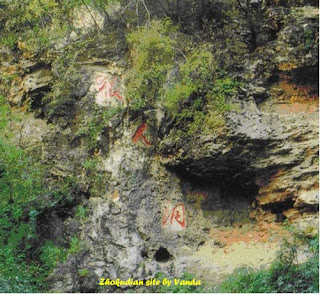Please welcome to Zhoukoudian, this place will over you to the old life of the cradle of China civilization, and this will describe for the Primitive life of human ancestors .
Zhoukoudian, about 50 kilometers (31 miles) southwest of Beijing, was a natural habitat of human ancestors about 700,000 years ago. Here multiplied descendents, from age to age, created the splendid Paleolithic Age. To some extent, this is the cradle of Chinese civilization. In this charming and mystical land, Peking man left its footprints. Today, the remains and site provides a good opportunity for tourists to explore the primitive life of our human ancestors.
Three representative remains exist:
- the Peking Man Site,
- the Upper Cave Man Site and
- the New Cave Man Site.
In 1921, a cave was discovered at Zhoukoudian. Archaeologists confirmed it as the habitat of Peking Man. Today, it is called Locality One or Apeman Cave. In 1929, the discovery of a complete skullcap fossil by a Chinese Paleontologist, Pei Wenzhouong, caused excitement around the world. The skullcap fossil could be traced back 500,000-700,000 years ago, proving the existence of Sinanthropus. This discovery serves as reliable and convincing evidence for the theory of evolution. Since then, Zhoukoudian has become known as the “Home of Apeman”. Decades of scientific work and excavation revealed many skeletal fossils of the ancient Peking Man, stone and bone implements and ash residues.
In 1918, a site of ancient animal fossils was discovered in Zhoukoudian by Antson, a Swedish geologist and archaeologist appointed as the consultant by the then Northern Warlords ruling government. In 1921, Antson and an Austrian paleontologist, guided by local people, discovered more fossil deposits on the north slope of the Dragon Bone Hill, known as the Zhoukoudian first site, where they found two fossil teeth of human being. In 1927, Swedish paleo-vertebrate zoologist B. Bulin and Chinese geologist Li Jie led a large-scale excavation in the first site. On December 2, 1929, Chinese renowned archaeologist Pei Wenzhong independently launched another excavation and discovered the first skull fossil of ape man which was named as the Peking Man. It was identified as being at least 600,000 years old. The news of finding the Peking Man shocked the academic circle around the world. In the following excavations, a number of relics of stone tools and sites where Peking Man used fire were discovered on the Dragon Bone Hill. The study on these findings indicates that Peking Man lived about 690,000 years ago and could walk erectly. They lived on hunting animals, could make and use coarse stone tools and learned how to use fire to cook food.
Peking Man lived in the early Paleolithic period.
- The Peking Man Site .
The Peking Man Site is situated in the Dragon Bone Hill near Zhoukoudian. Since 1921, eight sites of ancient human remains have been discovered. 26 localities where high concentrations of fossils were found have been excavated. 118 kinds of animal fossils and over 100,000 stone wares have been unearthed. These fossils and remains serve as evidence of the existence of humanoid species 500,000 years ago in Zhoukoudian.
- The Upper Cave Man Site.
The Upper Cave Man Site was discovered in 1930, and was excavated in 1933. It is located above the Apeman Cave near the peak of the Dragon Bone Hill. The cave is about 4 meters (13 feet) high and 5 meters (16 feet) wide. Three complete skullcap fossils and many other fossils were discovered here. Around the skeletons the powder of red hematite was also discovered. Other finds include bone needles, animal teeth and the remains of necklaces that were used as ornaments. These remains prove the utilization of animal furs to make clothes and to dress themselves and to keep warm. According to scientific research, the Upper Cave Man lived about 18,000 years ago with their physical character being quite similar to that of modern man.
The New Cave Man Site
In 1973, the New Cave Man Site was found in Locality Four, 100 meters (328 feet) south to the Apeman Cave. The New Cave Man lived 100,000 years ago. The discovery of this site bridges the gap between Peking Man and Upper Cave Man, and the succession of Peking Man's evolution. One tooth, fossils of amniotes and other animal fossils were unearthed here.



No comments:
Post a Comment